When planning a trip to Japan, most travelers naturally gravitate toward famous attractions like bustling Tokyo, historic Kyoto, or iconic Mount Fuji. However, exploring hidden gems in Japan can offer deeper insights into the culture, traditions, and breathtaking landscapes many tourists never see. By venturing beyond typical tourist routes, you’ll discover unique experiences and authentic charm that mainstream destinations often lack.
In this comprehensive guide, we’ll uncover 10 amazing off-the-beaten-path destinations across Japan, perfect for travelers seeking authenticity, tranquility, and adventure. Whether you’re intrigued by secluded islands, quaint historic towns, or serene natural wonders, these hidden treasures promise unforgettable experiences.
If you’re interested in classic attractions too, be sure to check out our detailed guide on the 15 Best Places to Visit in Japan.
Table of Contents
Why Choose Off-the-Beaten-Path Destinations in Japan?
Choosing to explore off-the-beaten-path destinations in Japan offers numerous advantages. Firstly, these hidden locations provide genuine interactions with local communities, away from the crowded tourist hotspots. This means experiencing authentic Japanese culture in its purest form.
Additionally, many travelers crave the tranquility found in lesser-known Japanese destinations. Imagine strolling through serene villages or pristine natural landscapes without large crowds, enhancing your sense of discovery and connection.
Visiting these secret places in Japan also supports local economies that are often overlooked by mainstream tourism. Spending time in smaller communities and family-run accommodations helps sustain traditional lifestyles and preserve heritage.
Lastly, traveling to underrated destinations in Japan allows for uniquely memorable experiences—from discovering hidden waterfalls and secluded temples to enjoying regional culinary delights rarely tasted by typical tourists.
1. Yakushima Island – Enchanted Forests and Natural Wonders
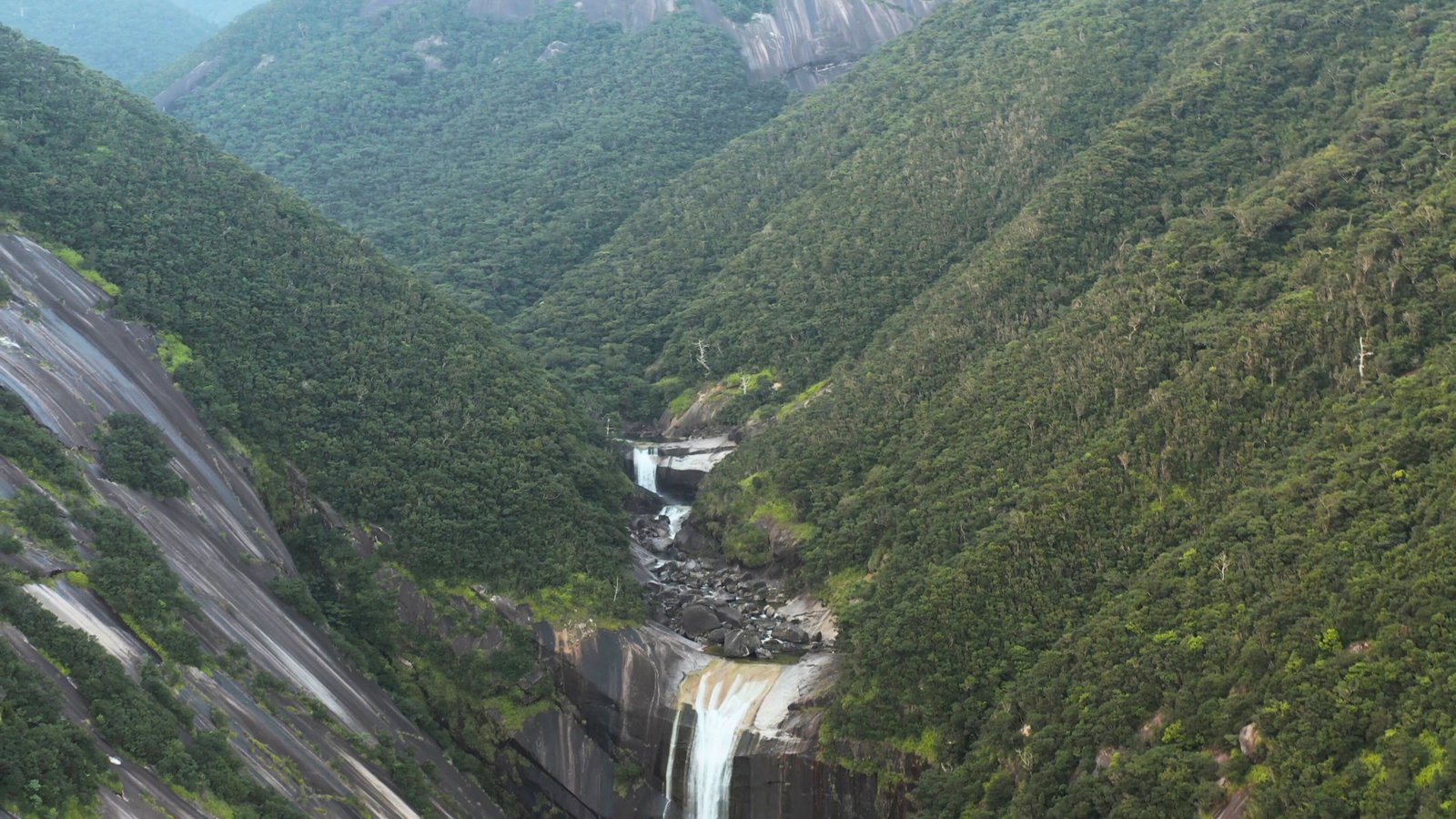
Yakushima Island is one of Japan’s most captivating hidden gems, allowing travelers to immerse themselves in pristine nature. Located off Kyushu’s southern coast, this lush, mountainous island is famed for its ancient cedar forests, stunning waterfalls, and captivating wildlife.
Explore the Mystical Forests of Yakusugi Land
Yakushima is renowned for its Yakusugi cedar trees, some of which are thousands of years old. A visit to Yakusugi Land, a protected nature reserve, is a must. Wander along its enchanting trails and encounter majestic cedars, moss-covered landscapes, and tranquil streams. This area inspired the setting for the famous Studio Ghibli film “Princess Mononoke”, making it an ideal spot for nature lovers and film enthusiasts alike.
Trekking to Jomon Sugi
Trekking to Jomon Sugi—the island’s oldest and most revered tree—is an unforgettable experience for adventurous travelers. Jomon Sugi is an awe-inspiring sight estimated to be between 2,000 and 7,000 years old. The trek is challenging but rewarding, taking you through lush forests and scenic vistas. Ensure you prepare properly with comfortable gear and sufficient water.
Scenic Wonders: Waterfalls and Beaches
Yakushima isn’t only about forests; it also boasts breathtaking waterfalls like Oko-no-Taki, one of Japan’s top 100 waterfalls, cascading dramatically into a refreshing pool below. The island’s beaches, such as Nagata Inaka Beach, also offer beautiful coastlines and seasonal opportunities to observe endangered loggerhead turtles nesting.
Travel Tip: For those planning to visit Japan’s bustling capital, our article on a 7-Day Tokyo Itinerary is a great addition to your itinerary.
2. Iya Valley, Shikoku – Japan’s Remote and Rugged Paradise
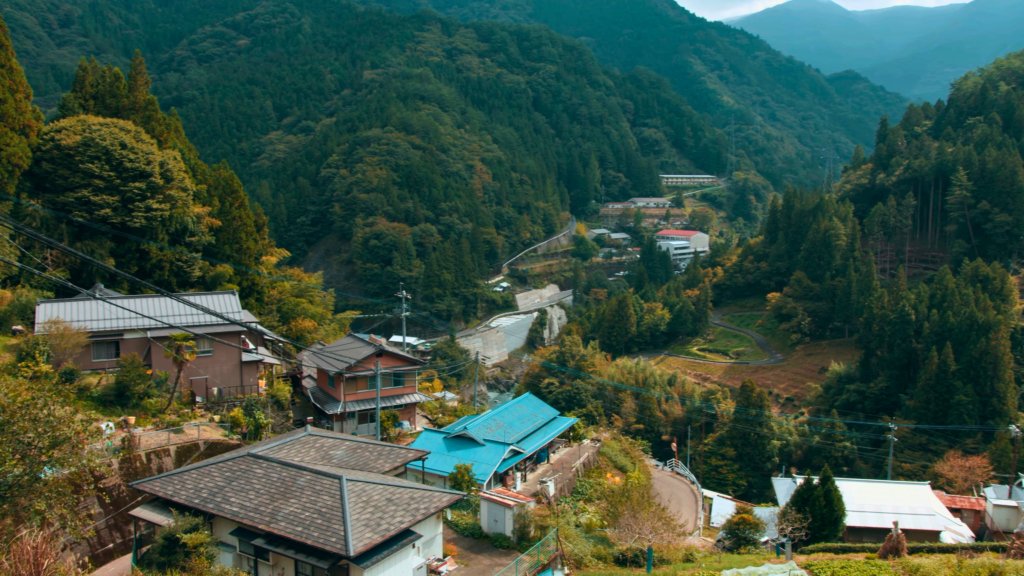
Tucked away in Shikoku, the smallest of Japan’s main islands, lies the remote Iya Valley—a rugged, picturesque paradise that feels worlds away from Japan’s bustling cities. Known for its steep mountain slopes, deep gorges, and traditional vine bridges, the valley is an idyllic retreat for travelers seeking tranquility and authentic cultural experiences.
Crossing the Kazurabashi Vine Bridge
The iconic Kazurabashi Vine Bridge is a highlight of Iya Valley. Suspended high above the emerald-hued river below, this thrilling bridge is traditionally constructed from vines and planks, adding a sense of adventure to your journey. As you carefully cross, enjoy stunning views of the surrounding nature.
Scenic Beauty: Oboke and Koboke Gorges
Don’t miss exploring the spectacular Oboke and Koboke Gorges, renowned for their scenic beauty and crystal-clear waters. You can enjoy rafting or leisurely boat rides to witness the gorges’ dramatic cliffs up close.
Stay in Traditional Thatched Houses
Iya Valley offers visitors unique accommodation experiences. Stay overnight in a traditional thatched-roof farmhouse, known as a “Chiiori,” to genuinely connect with Japan’s rural heritage. These charming homes provide insight into the local lifestyle, with cozy interiors and traditional meals cooked over open hearths.
Taste Local Flavors
Indulge in delicious local cuisine, such as Iya soba noodles, freshly handmade using buckwheat flour, served in a flavorful broth. Complement your meal with regional dishes featuring seasonal mountain vegetables.
Travel Tip: For those planning extended explorations in Japan, our article Perfect 3-Day Kyoto Itinerary is a great addition to your itinerary.
3. Hagi – Historic Samurai Town in Yamaguchi
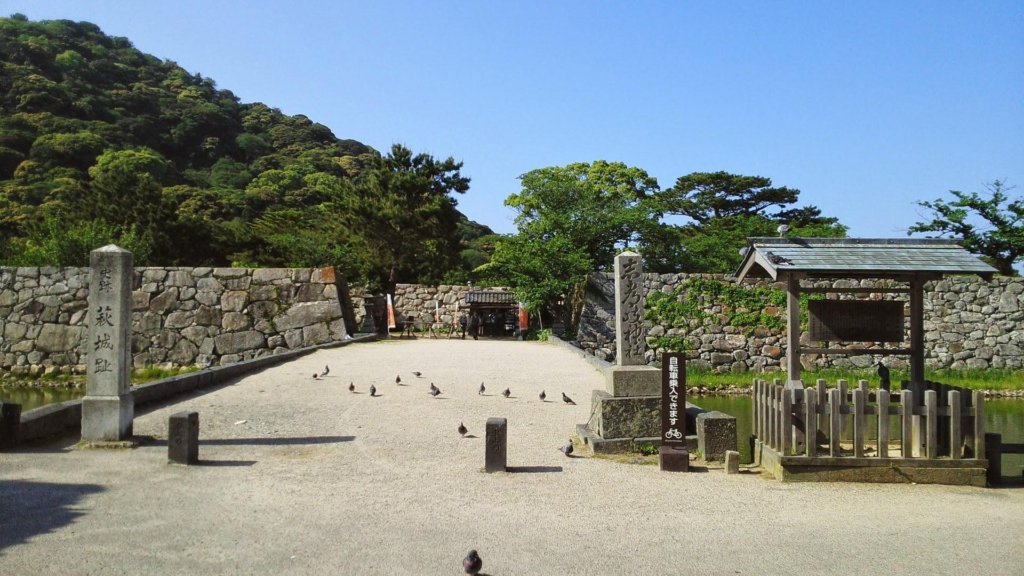
Stepping into Hagi feels like traveling back to Japan’s feudal era. Located in Yamaguchi Prefecture, Hagi is a beautifully preserved samurai town famed for its Edo-period streets, traditional samurai residences, and historical pottery culture.
Begin your journey by exploring the charming streets of Hagi Castle Town. Wander through narrow lanes lined with white-walled samurai houses that reflect Japan’s rich heritage. Don’t miss the well-preserved homes of Kikuya and Kubota, offering a fascinating glimpse into the life of samurai families. Visiting Hagi Castle ruins is essential—climb up to Shizuki Park for a spectacular view of the town and the Sea of Japan.
Hagi is also renowned for its pottery, known as Hagi-yaki, which is characterized by its earthy tones and rustic beauty. Take a pottery-making class to craft your own memorable souvenir, or browse local studios and shops.
The Shoin Shrine, dedicated to Yoshida Shoin, a prominent intellectual who shaped modern Japan, is a must-see landmark for history enthusiasts.
Travel Tip: Interested in exploring more historic towns like Hagi? Check out our blog post on the “10 Best Day Trips from Tokyo: Easy Getaways You Can’t Miss“ to dive deeper into Japan’s rich cultural past.
4. Tottori Sand Dunes – An Unexpected Japanese Desert

Imagine sand dunes stretching as far as your eyes can see—this isn’t the Middle East or North Africa, but Japan’s very own desert landscape, the stunning Tottori Sand Dunes. Located along the coast of the Sea of Japan, these dunes are the largest in the country, spanning about 16 kilometers long and up to two kilometers wide.
Visitors can enjoy a variety of thrilling activities on the dunes. Take a leisurely camel ride, try sandboarding, or simply walk across the breathtaking sandy expanse. For an unforgettable experience, hike to the dunes’ highest point and enjoy the panoramic views, particularly stunning at sunrise or sunset.
Adjacent to the dunes, you’ll find the Sand Museum, showcasing incredible sand sculptures crafted by international artists, changing themes regularly. It’s a unique experience that adds depth to your visit.
The Tottori Sand Dunes are easily accessible from major cities like Osaka and Kyoto, making them an excellent side trip. If you’re planning your journey from Osaka, refer to our “3 Days in Osaka Itinerary: The Perfect Travel Guide for First-Time Visitors” for additional travel inspiration.
By exploring destinations like the Tottori Sand Dunes, travelers uncover Japan’s astonishing diversity, revealing landscapes that surprise and enchant beyond expectations.
5. Lake Towada & Oirase Gorge – Serene Beauty in Northern Honshu
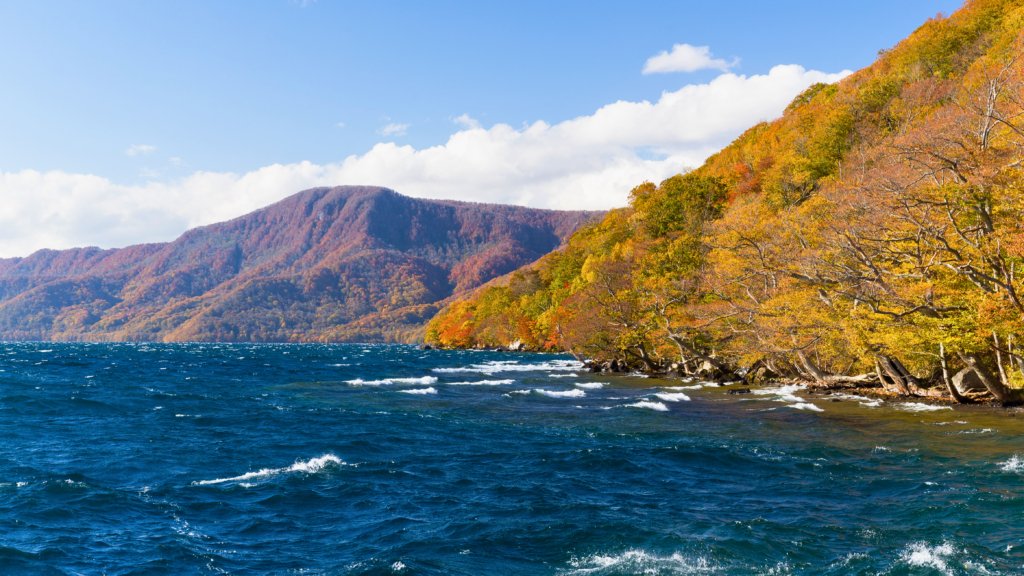
Lake Towada, nestled between the Aomori and Akita prefectures, is a tranquil volcanic crater lake known for its crystal-clear waters and mesmerizing natural beauty. Surrounded by dense forests and serene landscapes, it’s an ideal destination for nature lovers and photography enthusiasts. Visitors can enjoy a leisurely boat cruise across the calm waters or hike along the numerous trails that offer breathtaking views from every angle.
Just nearby, Oirase Gorge provides a picturesque hiking experience that complements Lake Towada perfectly. This gorge is celebrated for its lush greenery, rushing waterfalls, and gentle streams, making it a popular destination for hikers and nature enthusiasts seeking tranquility. Autumn is especially stunning here, as the foliage transforms into vibrant red, orange, and gold shades.
For travelers looking to explore Northern Honshu further, our detailed guide on “Ultimate 7-Day Hokkaido Itinerary: Best Places to Visit & Things to Do” includes practical insights that can complement your adventure.
Must-Do Activities:
• Scenic boat rides on Lake Towada
• Hiking through the beautiful Oirase Gorge trails
• Enjoy local cuisine featuring fresh lake fish
6. Taketomi Island – Okinawa’s Quiet Paradise
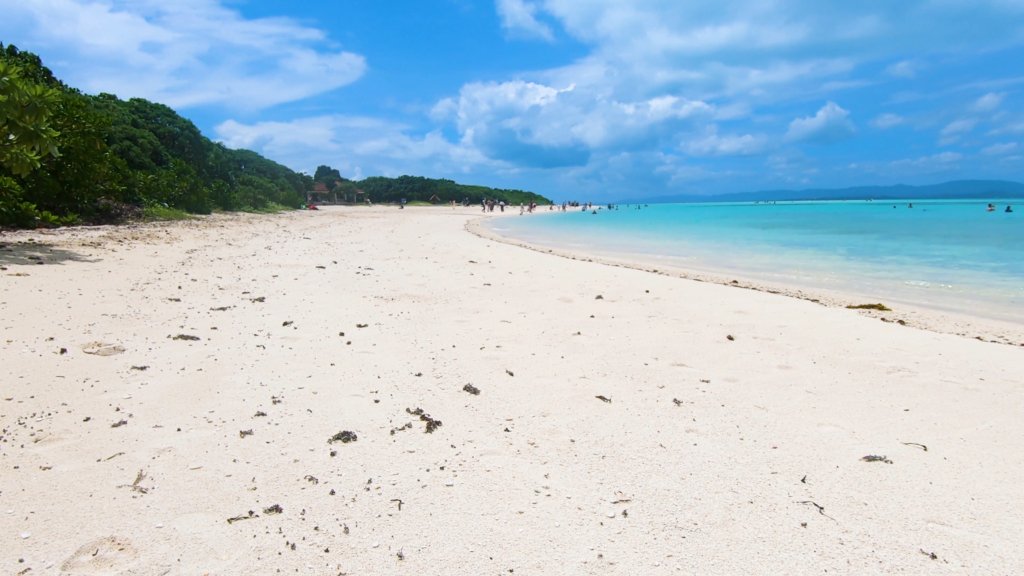
If your idea of paradise involves pristine white beaches, crystal-clear turquoise waters, and a leisurely pace, Taketomi Island in Okinawa is your ideal destination. A small island with well-preserved Ryukyu village architecture, Taketomi allows travelers to experience authentic Okinawan culture away from crowded tourist spots.
The island is famous for its traditional houses with red-tiled roofs, sandy streets, and lush greenery. Exploring the island by bicycle or buffalo-drawn cart offers visitors unique and memorable experiences. Moreover, Kondoi Beach and Kaiji Beach offer spectacular snorkeling opportunities with vibrant coral reefs and marine life.
Must-Do Activities:
• Bicycle tours around the charming villages
• Snorkeling in pristine waters
• Sampling traditional Okinawan dishes at local eateries
7. Mount Koya – Spiritual Retreat in Wakayama
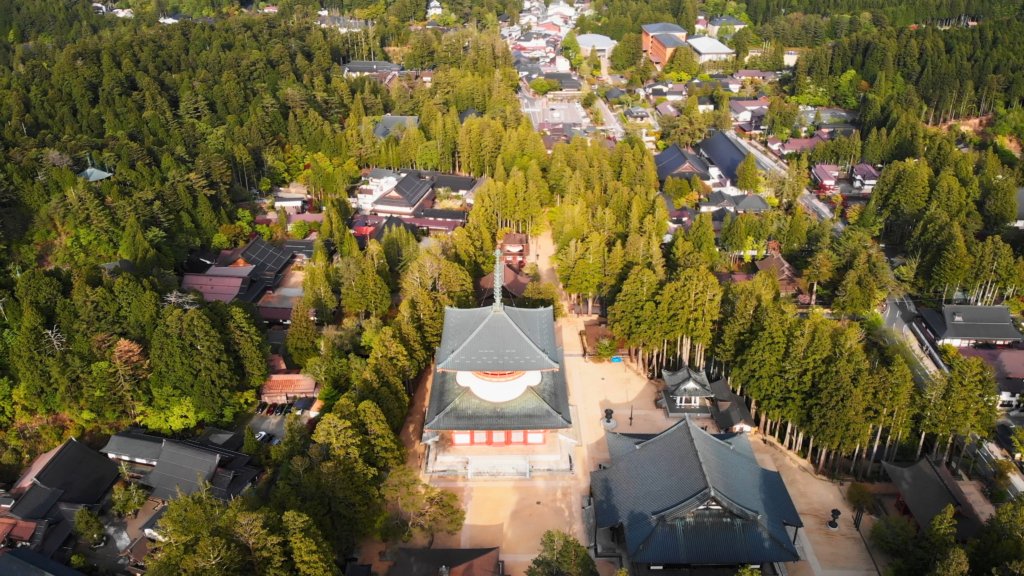
Mount Koya (Koyasan) is a serene and sacred mountain retreat located in Wakayama Prefecture, renowned as the center of Shingon Buddhism. Founded in the early 9th century by the monk Kukai, Koyasan offers travelers a uniquely spiritual and tranquil experience.
Visitors can explore over 100 temples and monasteries scattered throughout the mountain, with Kongobu-ji Temple, the head temple of Shingon Buddhism, being a notable highlight. Immerse yourself spiritually by staying overnight at a traditional temple lodging (shukubo), enjoying vegetarian meals (shojin ryori), and participating in morning prayers and meditation sessions.
Nature lovers will appreciate the peaceful walking trails around Mount Koya, particularly through the serene Okunoin Cemetery, Japan’s largest and most sacred cemetery, home to centuries-old cedar trees and historical monuments.
For additional spiritual journeys in Japan, refer to our itinerary “Perfect 3-Day Kyoto Itinerary: Top Things to Do, See & Experience“, which highlights some of Japan’s most sacred and historical sites.
Must-Do Activities:
• Overnight temple stays and Buddhist experiences
• Exploring the tranquil Okunoin Cemetery
• Trying traditional vegetarian cuisine (shojin ryori)
8. Shirakawa-go & Gokayama – Fairy-Tale Villages

Nestled in the mountainous region of central Japan, Shirakawa-go and Gokayama are enchanting villages famed for their traditional gassho-style farmhouses, characterized by steeply thatched roofs designed to withstand heavy snowfalls. Both villages have earned UNESCO World Heritage status for their well-preserved architecture and cultural heritage.
Stroll through the quaint streets of Shirakawa-go and admire these iconic houses, many of which have been converted into museums, guesthouses, or cafes. Visitors can learn about local traditions, explore artisanal workshops, or even stay overnight in a traditional farmhouse for an immersive experience.
Winter is especially magical here, as the villages transform into picturesque snow-covered scenes straight out of a fairy tale. However, visiting during autumn or spring offers equally beautiful experiences, with vibrant foliage or blossoming flowers.
Must-Do Activities:
• Exploring traditional gassho-style houses
• Overnight stays in historic farmhouses
• Enjoying scenic hikes and seasonal beauty
9. Matsue – City of Water and Samurai Culture
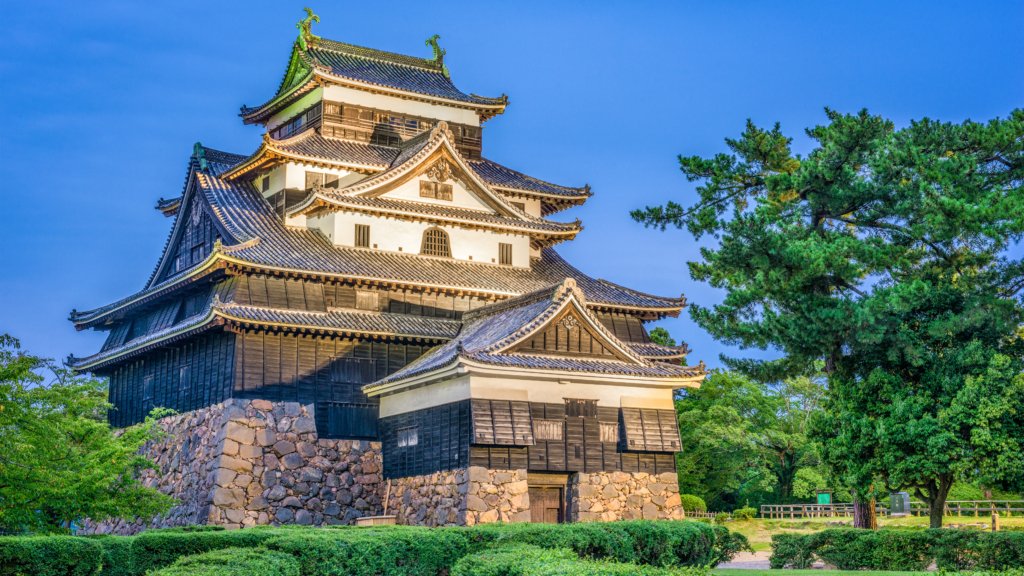
Known as the “City of Water,” Matsue in Shimane Prefecture charms visitors with its canals, scenic lakes, and rich samurai heritage. Central to Matsue’s charm is Matsue Castle, one of the few original castles remaining in Japan, offering sweeping views of the city and surrounding waters. After exploring the castle grounds, enjoy a leisurely boat ride along the canals to appreciate Matsue’s beauty from the water.
The city’s deep-rooted tea culture allows you to participate in traditional tea ceremonies at historic tea houses, such as Meimei-an, enriching your cultural experience. Nearby, the Adachi Museum of Art houses impressive collections and stunning Japanese gardens that are recognized as among the most beautiful in Japan.
Don’t forget to visit the nearby Izumo Taisha Shrine, one of Japan’s oldest and most important shrines, making Matsue an excellent base for spiritual exploration.
Must-Do Activities:
• Explore Matsue Castle and take a scenic boat tour
• Participate in a traditional tea ceremony
• Visit the nearby Izumo Taisha Shrine
10. Aogashima Island – Remote Volcanic Island Adventure

Aogashima Island is truly one of Japan’s most spectacular hidden gems. This remote volcanic island, located south of Tokyo, offers an unparalleled adventure for travelers seeking isolation, raw beauty, and extraordinary landscapes.
The island’s distinctive volcanic shape—an island within an island—makes it visually breathtaking. Visitors can hike around the crater, explore geothermal areas, and experience cooking meals using natural volcanic heat at the local outdoor cooking spots.
Stargazing on Aogashima Island is also exceptional due to its isolation and lack of artificial light pollution. Visitors will be amazed by the clarity and brilliance of the night sky, creating unforgettable memories.
Access to Aogashima is adventurous, typically involving helicopter rides or ferry trips from nearby Hachijojima Island, so plan your journey accordingly for this unique experience.
Must-Do Activities:
• Hiking and exploring the volcanic landscape
• Geothermal cooking experiences
• Incredible stargazing opportunities
How to Travel Responsibly to Japan’s Hidden Gems
When exploring Japan’s hidden gems, responsible travel practices are essential. These lesser-known destinations often rely heavily on local culture and environment, making mindful travel critical to their sustainability.
Firstly, respect local traditions and customs. Take time to research cultural etiquette, such as removing shoes when entering homes or temples and observing quietness in sacred spaces. Engage positively with locals to enhance your travel experience.
Supporting small businesses by choosing family-run guesthouses, traditional ryokans, and local eateries can significantly benefit the community. Spending your tourism dollars at small businesses helps maintain their traditions and livelihoods.
Secondly, opt for environmentally friendly transportation methods, such as trains, buses, bicycles, or walking, reducing your environmental footprint. Additionally, avoid plastic waste by bringing reusable bottles and bags.
Best Time to Visit Japan’s Off-the-Beaten-Path Destinations

Choosing the ideal time to visit Japan’s hidden gems significantly influences your experience. Japan’s diverse climate offers distinct seasonal attractions throughout the year, each season bringing unique charm to off-the-beaten-path destinations.
• Spring (March-May): Perfect for cherry blossoms in lesser-known spots, vibrant flower fields in Furano, and pleasant hiking weather in places like Yakushima.
• Summer (June-August): This time is ideal for exploring northern regions like Hokkaido, the beaches of Taketomi Island, and mountainous areas such as Iya Valley, which provide cooler retreats from the summer heat.
• Autumn (September-November): Best known for stunning fall foliage at Lake Towada, Shirakawa-go, and Mount Koya. Cooler temperatures and vibrant colors enhance scenic hikes and outdoor exploration.
• Winter (December-February): Enjoy snow-covered landscapes in Shirakawa-go, winter festivals in Hokkaido, and soothing hot springs in remote onsen towns.
For a detailed breakdown by month, refer to our guide “Best Time to Visit Japan: Month-by-Month Weather & Travel Guide”.
Selecting the right time of year ensures your experience exploring hidden destinations is comfortable, enjoyable, and memorable.
Practical Tips for Visiting Lesser-Known Japanese Destinations
Exploring Japan’s lesser-known destinations requires more planning but provides immensely rewarding experiences. Here are some practical tips to ensure a smooth journey:
• Plan Ahead: Smaller destinations might have limited transport options, accommodations, or restaurants. Booking your lodging and transportation in advance is essential.
• Transportation: Utilize Japan Rail Pass, regional passes, or local bus networks for cost-effective and convenient travel. Renting a car can also be beneficial for accessing remote areas like Iya Valley or Aogashima Island.
• Language Barrier: English is less commonly spoken in rural areas, so learning basic Japanese phrases or carrying translation apps can significantly enhance your interactions.
• Cash Availability: Many smaller destinations may not accept credit cards. Ensure you carry enough cash (Japanese yen), as ATMs might be scarce in remote regions.
• Travel Insurance: Make sure to have comprehensive travel insurance covering remote travel destinations.
Local Food Recommendations at Each Destination

Sampling local cuisine is an integral part of experiencing Japan’s hidden gems. Here are some must-try dishes from featured destinations:
• Yakushima Island: Flying fish dishes and fresh seafood.
• Iya Valley: Handmade Iya soba noodles and wild mountain vegetables.
• Hagi: Local seafood dishes and traditional sweets like uiro (rice flour cake).
• Tottori: Fresh crab dishes and nashi pears (Japanese pears).
• Lake Towada: Kokanee salmon, locally called “Himemasu.”
• Taketomi Island: Okinawan soba, goya champuru (bitter melon stir-fry).
• Mount Koya: Shojin ryori, Buddhist vegetarian cuisine.
• Shirakawa-go & Gokayama: Hoba miso (miso grilled on magnolia leaves) and grilled river fish.
• Matsue: Izumo soba noodles and freshwater clam dishes.
• Aogashima Island: Geothermal-cooked dishes using local ingredients.
Conclusion
Exploring hidden gems in Japan offers unique, authentic experiences far removed from the typical tourist trails. By venturing into these extraordinary places, travelers gain deeper cultural insights, interact meaningfully with locals, and witness breathtaking landscapes that many visitors never experience.
From the mystical forests of Yakushima Island to the tranquil serenity of Mount Koya and the picturesque charm of Shirakawa-go, each destination featured here promises memorable adventures and lifelong memories. So, pack your bags, step off the beaten path, and discover the true essence of Japan.
If you’re inspired to explore even more, don’t forget to check our extensive guide, “Japan Itinerary for First-Timers: How to Spend 10 Amazing Days in Tokyo, Kyoto & Osaka”, for additional unforgettable travel experiences.
Don’t forget to follow us on Facebook, Twitter, and Instagram for more travel tips and inspiration.
If this post was helpful, check out our blog for more travel guides and tips!


